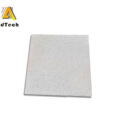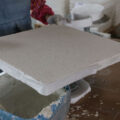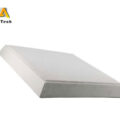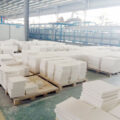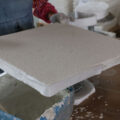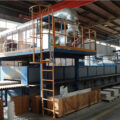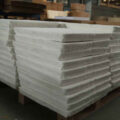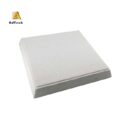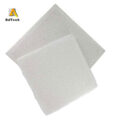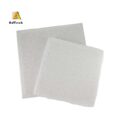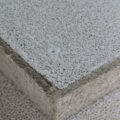The production of ingots and billets of aluminium and other non-ferrous metals usually includes a filtration step, in which the liquid metal is passed through a filter to remove inclusions, for example insoluble solid or immiscible liquid impurities. Open pore ceramic foam filter is frequently used for this purpose.
To cast lightweight materials aluminum alloys, a solid ingot is manufactured through melting, alloying, and molten aluminum treatment and is then delivered to a casting plant (e.g., for die casting). In the casting plant, the ingot is melted again in a quick-melting furnace, and is then carried to a heat-retaining furnace, where casting takes place.

When the ingot is delivered from an alloying plant, where alloys are manufactured from aluminum raw materials, to the casting plant, quality and production-related information is confirmed as written on a mill sheet since the ingot is generally manufactured in the alloying plant. Quality inspection in the casting plant determines the properties of the material by inspecting the exterior of the solid metal or sampling the solid metal (i.e., ingot) and measuring composition and gas content.
Open pore ceramic foam filter is suitable for filtering non-ferrous metals, especially the aluminium and alloys.
The ceramic foam filter manufacturing process using conventional ceramic foam precursor techniques.
These ceramic foam filter manufacturing techniques typically include making up an aqueous slurry, coating a foam precursor with the aqueous slurry by impregnating the precursor with the slurry and then squeezing the excess slurry out of the foam precursor, and controlled drying of the coated precursor to remove the liquid phase of the slurry.
The drying step develops a rigid “green state” article by use of the organic binder and colloidal silica. The filter is then fired by placing the dried green state article into a kiln, for example a tunnel kiln, and subjecting it to a firing process that may include a number of thermal gradients and time periods.
Those firing steps and time periods ensure a number of critical manufacturing steps are met. These include vaporisation of the foam precursor, activation of the inorganic binder or binders, and controlled cooling to minimise thermal shock after peak temperature bonding.



